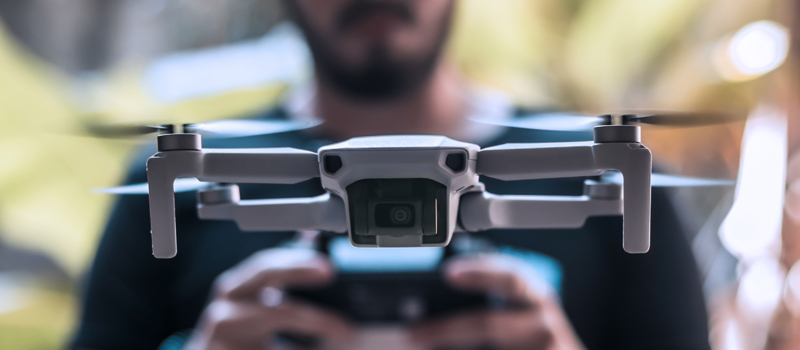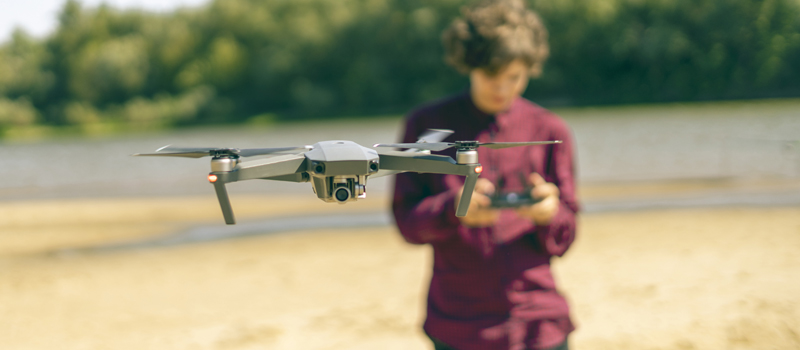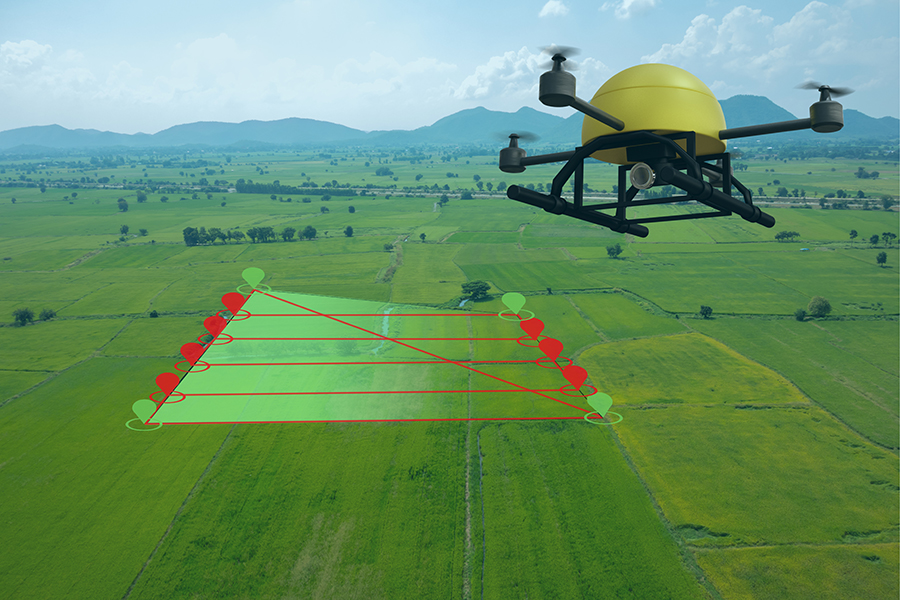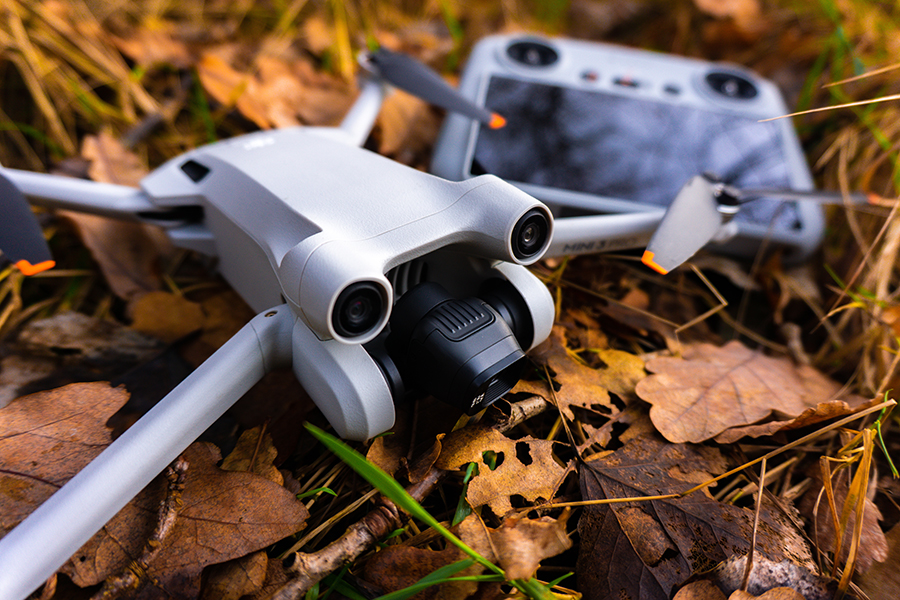-
What is UTM?
-
A brief history of UTM
-
The role of Remote ID in UTM
-
How will UTM work?
-
How UTM makes BVLOS operations possible
-
How UAS and manned aircraft can de-conflict under UTM
- UAS Volume Reservations
- On-board cooperative equipment
- Voluntary passive UTM participation
- Voluntary active UTM participation
- What’s next for UTM?
-
Final thoughts
In recent years, legislation and regulations surrounding unmanned flights in the US have been rapidly evolving. This has been driven mostly by the perceived value of drone operations, whether commercially or for applications in emergency response and public safety. However, widespread drone operations cannot be fully realized without a system for traffic management.
Establishing UAS traffic management (UTM) is one of the more challenging long-term goals of the FAA. What exactly is UTM and how does the drone community benefit from it? What roles does Remote ID under this system?
What is UTM?
UAS traffic management (UTM) is an ecosystem that aims to separate unmanned aircraft and manned aircraft in uncontrolled areas of the national airspace. Developed through a partnership of the FAA, NASA, and other federal agencies, UTM aims to widen the scope of safe UAS operations to support beyond visual line of sight (BVLOS) and other, more complex UAS operation types.
One aspect of UTM is that it is a separate entity from the Air Traffic Management (ATM) ecosystem used in airports and implemented by air traffic control (ATC). This means that UTM does not apply to controlled airspace including Class B, C, D, and E airspace. Instead, UTM will be implemented from the surface to 400 feet altitude in Class G airspace.
Why does UTM need to be separated from ATM? The main reason is the sheer volume of unmanned aircraft operations, especially considering this industry’s recent growth. Air traffic controllers would be overwhelmed if they had to coordinate all unmanned operations. Instead, UTM has been devised to be an autonomous system.
Since UTM is implemented only in uncontrolled airspace, there is no single air traffic controller tasked with maintaining it. The vision of the FAA is for UTM to be a product of cooperative interaction between UAS operators and the FAA. How this works in practice. How this ecosystem will work in detail is something that we shall tackle later on.
A functioning UTM will open the doors to valuable UAS operations such as autonomous drone delivery, urban air mobility, and possibly “air taxis”. Considering the potential applications, it’s not surprising to see large companies developing technologies and cooperating with the FAA to help develop a comprehensive UTM system.
It is important at this point to note that the UTM is a concept that continues to be developed by the FAA. We may yet to see this ecosystem evolve in the next couple of years.
A brief history of UTM
The beginnings of UTM can be traced back to 2014 when NASA started research, development, and testing in collaboration with the FAA and more than 100 partners from the aviation industry, academe, and public agencies. In 2015, NASA held the Unmanned Aerial Systems Traffic Management Convention or UTM 2015, where an audience of international and US-based government and civilian representatives were able to discuss and understand the potential impact of low-altitude UAS traffic management.
By 2016, NASA had completed Technical Capability Levels 1 and 2 of the UTM project via two demonstrations. In the TCL 2 demonstration, NASA was able to prove the feasibility of conducting BVLOS operations of multiple UAS units using a UTM ecosystem.
During the same year, NASA and the FAA formed a UTM Research Transition Team (RTT) so that the two agencies can work together towards the eventual implementation of UTM. It was also during this phase that the idea for third-party support to provide networked information exchanges was developed. The architecture for this information exchange was called the Flight Information Management System (FIMS).
In 2017, the UTM RTT implemented the UTM Pilot Program (UPP) to test and demonstrate an initial set of UPP capabilities in three designated test sites. By 2019, UTM services including airspace authorizations, activity notifications, and collaborative flight information sharing between UAS operators. The results of these tests were then compiled into a report as a proof of concept for the deployment of UTM capabilities
From 2017 to 2018, the FAA started to roll out the Low Altitude Authorization and Notification Capability (LAANC), a more convenient system for UAS operators to request airspace authorization. The main advantage of this system is that it provides UAS operators an almost instant response to their requests. The implementation of LAANC was further expanded
In early 2020, the FAA started the implementation of Remote ID. This is a system that will allow a UAS in flight to broadcast identification information that will be received by federal agencies, law enforcement, and other authorized parties. The UTM capabilities for information exchange will act as the supporting architecture for the implementation of Remote ID.
The role of Remote ID in UTM
At the end of 2019, FAA published the Notice for Proposed Rulemaking (NPRM) for Remote ID. The NPRM was met with lots of criticism back then mostly because it proposed a network-based infrastructure that posed privacy issues and would have been costly for UAS operators to use.
An overhaul was made on the NPRM before the final rule was filed into the National Register in early 2021. Among the more notable changes is the shift towards a broadcast-based model. In the current infrastructure of Remote ID, the broadcast signal can be received only by other parties in the same general area.
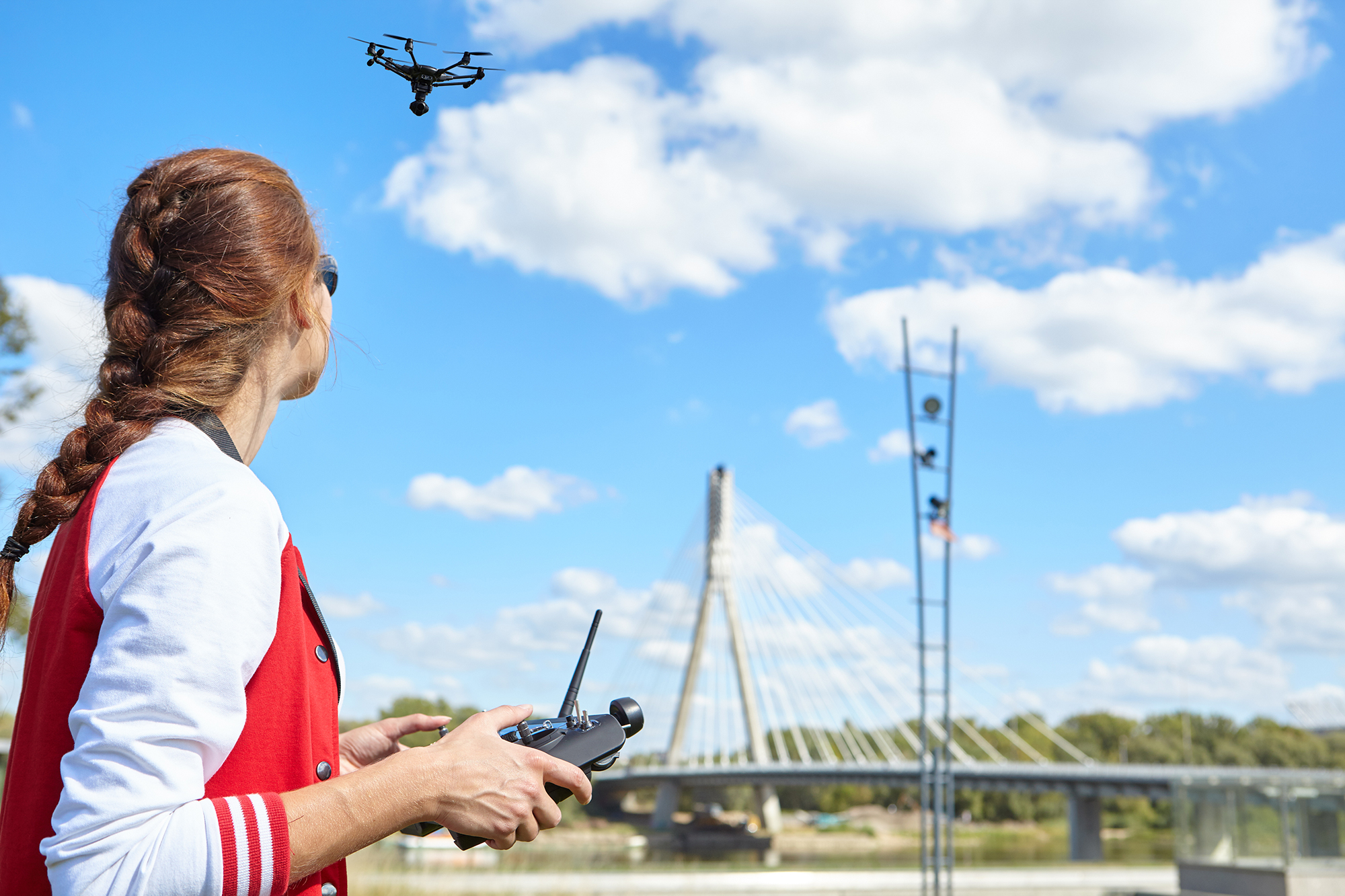
The goal of Remote ID is to provide real-time information about the airspace to anyone who is operating within the same airspace or is in charge of its safety. This is a step towards a cooperative traffic management system, which is precisely the vision of UTM. In the absence of air traffic control, Remote ID is one of the mechanisms for keeping uncontrolled airspace safe.
Although Remote ID is technically already implemented, UAS operators do not need to worry about it yet. By late 2022, drone manufacturers will be expected to include Remote ID modules in all their units. It will only be after a year from this date that UAS operators will be required to strictly comply with Remote ID requirements unless they operate in pre-identified FAA-recognized identifications areas (FRIAs).
It is worth noting that the broadcast-based model for Remote ID may be in implementation right now, but this does not mean that the FAA has ruled out the network-based model. Based on the Concept of Operations of UTM, both Direct Broadcast and Network Publishing are still considered viable methods for Remote ID transmission.
How will UTM work?
The actual operational concepts of UTM can be found in the Concept of Operations V2.0 document that has been published by the FAA. The document is long and very detailed, but we will be focusing on the UTM architecture found on Page 9. The architecture describes the parties involved in UTM, how they interact with each other, and their specific roles and responsibilities.
At the bottom right of the diagram are the UAS and their operators. Through broadcast-based Remote ID, UAS in the same can communicate with others to avoid conflict in airspace. UAS operators can also communicate with each other or with other aircraft if necessary.
Right above the UAS operators is the UAS Service Supplier (USS). This is a 3rd party services provider that collects data about UAS operations and provides it to all concerned parties including the FAA, local law enforcement, other UAS operators in the areas, or the general public.
The UAS operator will be responsible for gathering all the relevant data needed for safe UAS operations and transmitting them to the USS. One important piece of information is the flight intent which provides details about the location, time, and duration of UAS operations. This helps avoid airspace conflict by letting other UAS operators in the area know that you will be there and are expected to steer clear. This information exchange will be done through a network environment.
At the left side of this diagram is the FIMS that is managed by the FAA. This entity will transmit data about airspace constraints and request information to the UAS operators through the USS. In return, responses and notifications from UAS operators will also be transmitted by the USS to the FIMS.
UAS operators will also have the option of sending Unmanned Aircraft Reports (UREP) to the USS should there be relevant information that they wish to share with other pilots and UAS operators in the area. This system is similar to the Manned Pilot Report (PIREP) used in manned aviation. This can be useful for unreported weather disturbance or any other unusual activity that can compromise aircraft operations.
At the top of the diagram is the Supplemental Data Service Provider. This will likely be another federal agency or a 3rd party service provider that can provide supplemental data such as terrain, weather information, or any other information that can help in the conduct of safe UAS operations.
How UTM makes BVLOS operations possible
One of the major goals of UTM is to make safe beyond visual line of sight (BVLOS) operations possible. Right now, the main danger of BVLOS operations is that it is impossible to exercise “see and avoid” practice when the aircraft itself is out of sight. The UTM ecosystem will act as an extension of these “see and avoid” protocols.
BVLOS operations of UAS require planning and coordination with the USS. The operator provides initial information to the USS. These include the location of the flight, points of interest, the time of the operations, and the duration. With this information, a 4D Operational Volume is assigned to the UAS operator. The “4D” in this context refers to the three spatial dimensions and an additional temporal dimension.
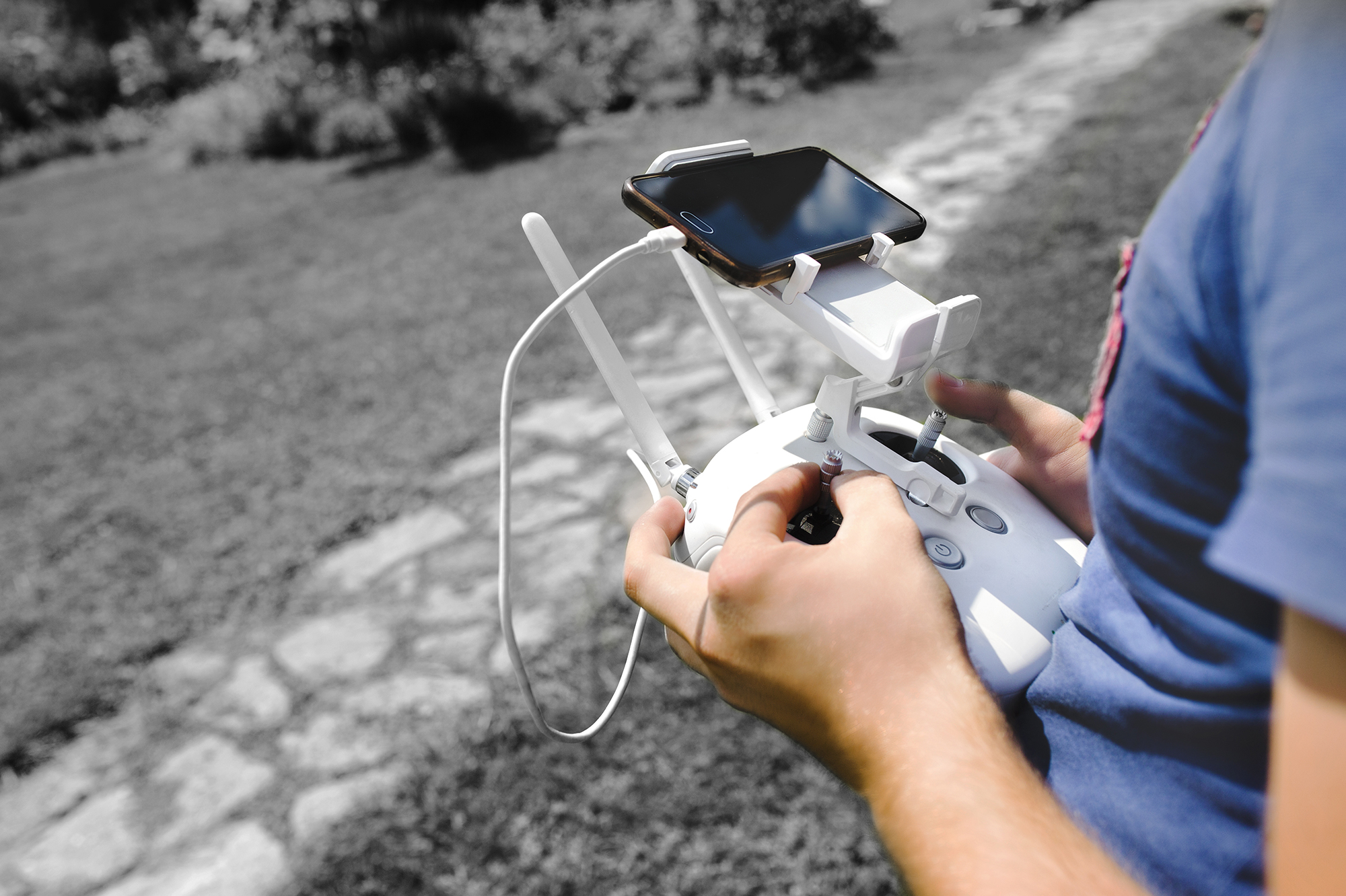
It is then the responsibility of the USS to ensure that there are no airspace conflicts between all the operators in their subscriber base, as well as those of other USSs with active operations. Performance buffers have to be applied to the projected flight path of each UAS operator, as well as the entry and exit times.
If there are any conflicts in the Operational Volume segments of different operations, it is also the responsibility of the USS to strategically de-conflict them. This can be done through either spatial or temporal adjustments. Once planning is complete, the USS makes the operational intent available through the USS network. In this manner, flight information and operational intent can be viewed by other USSs for their respective planning and coordination purposes.
During the operations, the USS will be monitoring the Remote ID information that should be continuously broadcasted by the UAS. At this point, the operation is in the “Activated” state. The USS will then have to confirm the conformance of the UAS to the filed operational intent based on Remote ID information.
Upon exiting the Operational Volume, the operation will be shifted to the “Closed” state. Relevant flight information will be archived by the UAS operator and the USS based on UTM requirements.
This scenario highlights the importance of the role of the USS in allowing for BVLOS operations in the UTM ecosystem. The USS acts similar to the air traffic controller, taking note of planned UAS operations and de-conflicting them if necessary. This also means that safe BVLOS operations will only be likely in a UTM ecosystem that uses a network-based model for information exchange.
How UAS and manned aircraft can de-conflict under UTM
With UTM, and more specifically Remote ID, UAS operators can be informed of the presence of any nearby aircraft. UAS operators need to take not note just of other UAS, but also any manned aircraft. In the current model, manned aircraft have no responsibility to participate in the UTM as UAS operators are expected to just yield right of way to them.
The interaction of manned aircraft and UAS under a UTM ecosystem can occur under several different scenarios. It is unclear at this point which of these scenarios will become implemented, but we can take a look at a few that have been identified in the Concept of Operations.
UAS Volume Reservations
A proposed system for safe BVLOS operations makes use of a concept called “volume reservation”. This has been initially proposed for emergency UAS operations.
In a sample scenario, an aircraft used for medical emergency response send a UAS Volume Reservation (UVR) request to the USS that defines an airspace volume and time of operations for the planned activity. As part of a public safety entity, the aircraft is authenticated by the USS to make the request.
The UVR request is transmitted by the USS to all UAS operators in the area as well as to the FIMS. With this information, the UAS operators are given the discretion to assess whether their operations will interfere with the operations under the UVR.
When UAS operators make changes to their plans, it is also their responsibility to report flight intent changes to the USS. This ensures that their new flight intent does not conflict with the updated flight intent of other UAS operators in the area.
On-board cooperative equipment
It may be possible to set up equipment in the UAS that can interact with compatible equipment in the manned aircraft. A common example of this scenario is the ADS-B receivers found in some UAS that can notify UAS operators if there are manned aircraft nearby that are actively transmitting ADS-B out signals.
Another possibility is for a manned aircraft to be outfitted with a module that can receive Remote ID signals so that it can detect UAS operations in its vicinity.
Voluntary passive UTM participation
The pilot of a manned aircraft can choose to passively participate in UTM by accessing local UTM information through the USS or FIMS. The only objective here is for the pilot to gain increased situational awareness of any nearby UAS operations. However, they do not share any flight information via the USS.
Voluntary active UTM participation
This model is quite similar to the previous one, but active participation involves a two-way information exchange. This means that the pilot of the manned aircraft receives UAS operations information and also provides flight intent information to the USS. This information is then made available to the UAS operators in the area.
In this scenario, a two-way information exchange does not imply that the pilot of the manned aircraft will de-escalate any conflict with UAS operations. UAS operators are still expected to yield right of way to manned aircraft, but they can do so with increased situational awareness.
As a side note, manned aircraft operations aren’t normally relevant to UTM because most of them happen in higher altitudes. However, helicopters and crop dusters typically operate below 400 feet. These low-altitude operations can be hard to reconcile with UTM, especially if BVLOS operations are introduced.
Although the participation of manned aircraft in UTM is not a requirement right now, the FAA also states that “as flight rules evolve, it is expected that manned aircraft operators will share some responsibility for separation when operating in the UTM ecosystem.” This implies that manned aircraft could be taking on a more active role in UTM in the coming years. It remains to be seen how such a decision will be received by the aviation community.
What’s next for UTM?
The UTM program has gone a long way since the concept was first developed and presented back in 2014. The implementation of the LAANC system was a great first step in the airspace integration of UAS and was one that was universally commended by the drone community.
Although the implementation of Remote ID leaves much to be desired, many drone pilots still recognize that it is an essential step towards a functioning UTM ecosystem. We may yet to see the Remote ID requirements change, but the industry still has about two years before strict compliance will be needed.
The next big step for the FAA is to develop a system that allows for safe BVLOS operations. This is the goal of the BEYOND program, an initiative that started in 2020 in partnership with eight organizations including the North Dakota Department of Transportation and the Center for Innovative Technology in Virginia.
Under the BEYOND program, each of the eight partner organizations is testing BVLOS operations in specific scenarios to come up with rules and standards that make BVLOS operations safe, repeatable, scalable, and economically viable.
One strategy being explored by the NC State University (in partnership with several other universities) is a shielded UAS operation. Companies that do powerline or pipeline inspections may greatly benefit from this technique. The idea is for the UAS to maintain proximity to obstacles like powerlines, treetops, or skyscrapers so that they do not get into conflict with manned aircraft. The idea was inspired by the nap-of-the-earth (NOE) strategy used by military aircraft to avoid detection.
The FAA has also started to create a distinction between local BVLOS operations and extended BVLOS operations. In a local operation, visual contact is disrupted only by the presence of obstacles, but the UAS still remains close to the operator. In an extended operation, visual contact can no longer be established because of the widening distance between the operator and UAS. With this distinction, the FAA may implement different standards for the two types of UAS operations.
Currently, public safety agencies are already being granted Tactical BVLOS (TBVLOS) waivers for local BVLOS operations. One restriction of the TBVLOS waiver is that the UAS must remain within 1500 feet of the remote pilot-in-command and that visual contact must be established as soon as possible.
Final thoughts
Establishing a working UTM ecosystem is the ultimate goal towards the integration of UAS into the national airspace. This is also the reason for the rapid evolution of UAS-related legislation in the past 5 or 6 years. With UAS operations being recognized more and more for their commercial value, the need to develop the UTM ecosystem has now become an important matter.
Current efforts are concentrated on coming up with standards for safe BVLOS operations. This will probably follow the full-scale implementation of Remote ID. These changes may be hard for many UAS operators to keep up with, but this is the general direction that the industry is headed towards.
